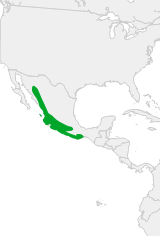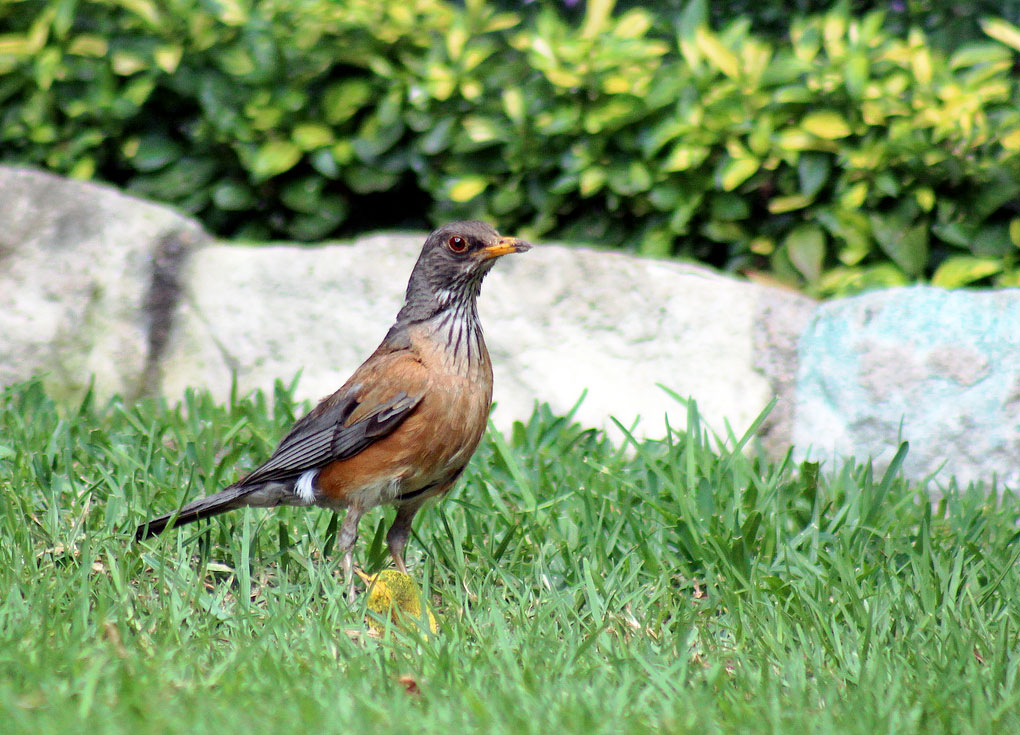Rufous-backed Robin
Regional Species
Undoubtedly one of the most attractively plumaged thrushes in Middle America, the Rufous-backed Robin is endemic to Mexico, where it is reasonably widespread and common over western and central areas of the country. Males have a gray head, with a white throat that is neatly streaked with black, a deep rufous mantle and wing coverts, becoming gray over the wings and tail, and principally orange-chestnut underparts. Females are similar, but generally duller and less contrastingly plumaged. A separate population recognized at nomenclatural level, and sometimes even treated specifically, as Grayson’s Thrush (Turdus graysoni) is endemic to the Tres Marías Islands. In this taxon, the rufous coloration of mainland populations is replaced by brown, and the underparts are largely dull buff. The Rufous-backed Thrush is found in a wide variety of forest types, from semi-arid to humid, and at elevations ranging from sea level to at least 1500 m.
Range

Habitat
It inhabits between 0 and 1500 m asl (populations of Distrito federal between 2200 and 2500), in arid to semideciduous (which in any time of year, some of the trees lose some or all of their leaves) and deciduous (which in any time of year, all trees lose their leaves) and edges, riparian zones, plantations and gardens.
Food
It feeds mainly on fruits and insects.
Behavior
A plaintive, mellow, drawn-out whistle, chiioo or tiiiuu, a fairly hard clucking chuk chuk chuk¿ or chok¿, and a high, thin ssi or ssit, mostly in flight. Song a leisurely rich warbling, includes 2-3 times repetition of some phrases.
Nesting
It breeds from March to August. The nest is a bulky cup of moss, grass, small roots, sometimes reinforced with mud, is placed in trees or bushes. Puts 2 to 3 eggs, pale blue to whitish flecked and mottled reddish brown and gray.
Appearance
Size and Shape
21.5 - 24.0 cm. Eyes dark brown, contour of eye yellow. Small bill, yellow.
Color Pattern
Head and nape grayish. Back and feathers that cover the wings rufous to olive-rufous. Rump and feathers that cover uppertail gray. Wings and tail dark gray. Throat white heavily streaked blackish. Chest and flanks rufous. Belly and feathers that cover undertail white. Legs relatively long, flesh color.
Populations of Islas Marías and some of Nayarit.
Usually are of a washed color. Back slightly brighter than head and nape. Underparts grayish, washed cinnamon on chest and flanks. Juveniles are similar to adults, but head and upperparts duller flecked whitish to buff; rump and feathers that cover uppertail brown. Underparts whitish to cinnamon spotted dark brown, feathers that cover undertail white.
Similar Species
There are other thrushes within its distribution range, although none with the combination of colors of the Rufous-backed Robin.
Did you know?!
- Globally and in Mexico, the species is considered as Least Concern due its broad distribution range and is not believed that their population size is declining. However, in Mexico, the subspecies graysoni (on Islas Marías) is considered as threatened, due its limited distribution and, it could find themselves in danger of disappearing in the short to medium term, if continue operating factors that adversely affect their viability, causing deterioration or habitat modification, or directly reducing its population size
